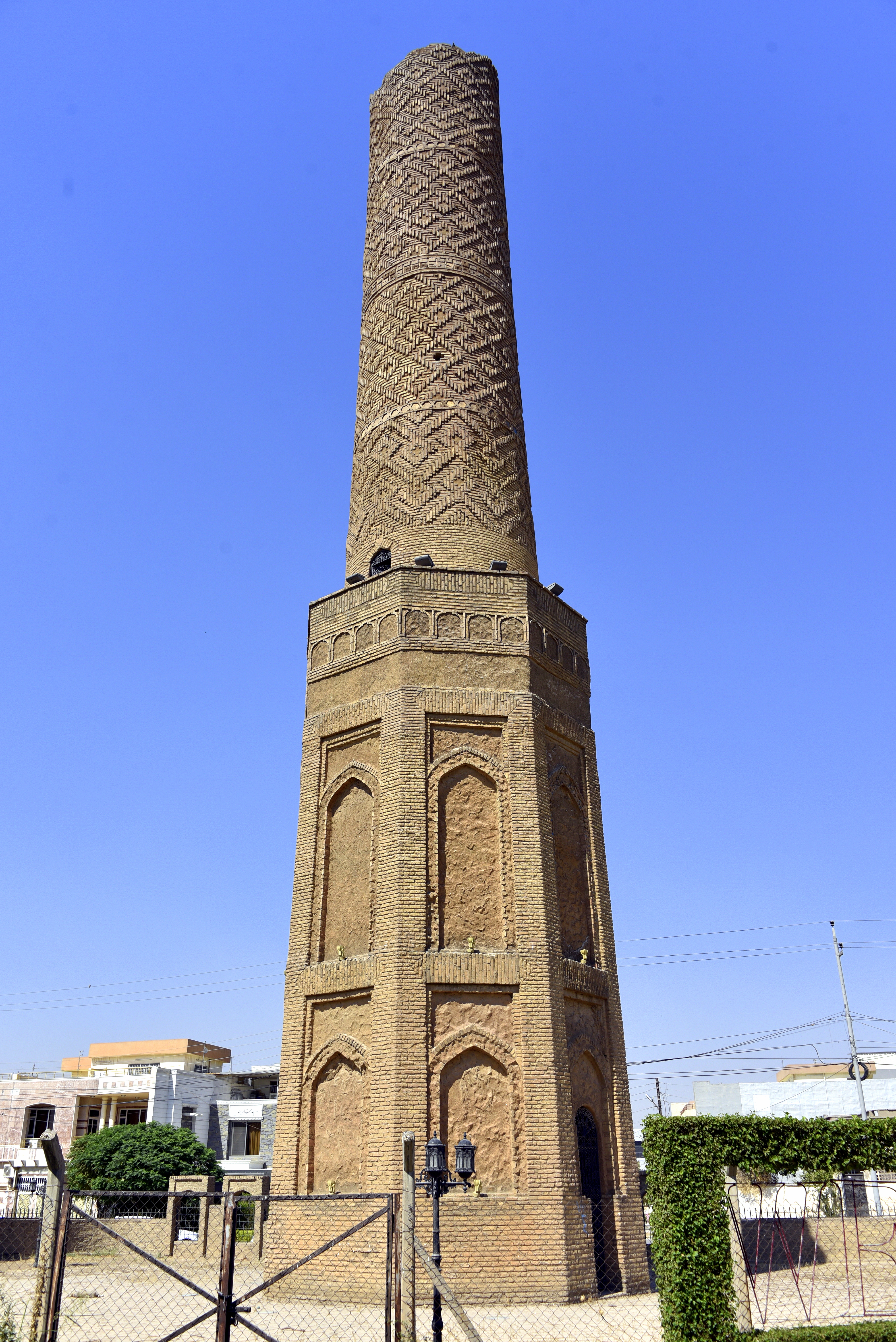Mudhafaria Minaret on:
[Wikipedia]
[Google]
[Amazon]
 The Mudhafaria Minaret is a
The Mudhafaria Minaret is a
History page
Minaret of the Great Mosque of Arbil
-
 The Mudhafaria Minaret is a
The Mudhafaria Minaret is a minaret
A minaret (; ar, منارة, translit=manāra, or ar, مِئْذَنة, translit=miʾḏana, links=no; tr, minare; fa, گلدسته, translit=goldaste) is a type of tower typically built into or adjacent to mosques. Minarets are generall ...
located in the new Minare Park on the west region of Erbil
Erbil, also called Hawler (, ar, أربيل, Arbīl; syr, ܐܲܪܒܹܝܠ, Arbel), is the capital and most populated city in the Kurdistan Region of Iraq. It lies in the Erbil Governorate. It has an estimated population of around 1,600,000.
Hu ...
, Kurdistan Region
Kurdistan Region ( ku, هەرێمی کوردستان, translit=Herêmî Kurdistan; ar, إقليم كردستان), abbr. KRI, is an autonomous region in Iraq comprising the four Kurdish-majority governorates of Erbil, Sulaymaniyah, Duhok, ...
, Iraq
Iraq,; ku, عێراق, translit=Êraq officially the Republic of Iraq, '; ku, کۆماری عێراق, translit=Komarî Êraq is a country in Western Asia. It is bordered by Turkey to Iraq–Turkey border, the north, Iran to Iran–Iraq ...
.
The minaret is 36 m (118 ft) high, was built in 1190–1232 AD (586–630 AH) by the Turcoman prince of Erbil, in the reign of Saladin
Yusuf ibn Ayyub ibn Shadi () ( – 4 March 1193), commonly known by the epithet Saladin,, ; ku, سهلاحهدین, ; was the founder of the Ayyubid dynasty. Hailing from an ethnic Kurdish family, he was the first of both Egypt and ...
, Muzaffar Al-Din Abu Sa’eed Al-Kawkaboori (Gökböri
Gökböri (also rendered Gokbori, Kukburi and Kukuburi), or Muzaffar ad-Din Gökböri ( ar, مظفر الدين كوكبوري, full praise names: al-Malik al-Muazzam (the Exalted Prince) Muzaffar ad-Din (the Triumphant in the Faith)), was a lea ...
) who had entered in the obedience of Saladin without war and married his sister.Geoff Hann, Karen Dabrowska, Tina Townsend-Greaves (2015) ''Iraq: The ancient sites and Iraqi Kurdistan'', Bradt Travel Guides, Chalfont St. Peter. p. 389
The minaret is composed of a high octagonal base and a tall cylindrical shaft, with a balcony located between the base and the shaft.
It is built of baked bricks, the base being decorated with two tiers of niches with pointed arches, two on each of the eight faces that are inscribed in rectangular frames. The balcony parapet is carved with twenty-four small niches, the access door to the minaret steps is on the eastern side of the octagonal base and leads top to the balcony. From there a small door gives access to steps inside the cylindrical shaft that led to the second balcony now collapsed.
The shaft tapers inward and is decorated with several bands of interlocking diagonal Hazar-Baf motifs that are separated with thin bands. Examples of Kufi
A kufi or kufi cap is a brimless, short, and rounded cap worn by men in many populations in North Africa, East Africa, West Africa, and South Asia. It is also worn by men throughout the African diaspora. It is also commonly called a "topi" o ...
calligraphy can be seen, showing the names of Muhammad and Mas'oudi Muhammadi, the builders of the Minaret.
References
External links
History page
Minaret of the Great Mosque of Arbil
-
ArchNet
Archnet is a collaborative digital humanities project focused on Islamic architecture and the built environment of Muslim societies. Conceptualized in 1998 and originally developed at the MIT School of Architecture and Planning in co-operation w ...
Religious buildings and structures completed in 1232
Towers completed in the 13th century
Buildings and structures in Erbil
Minarets in Iraq
Tourist attractions in Iraqi Kurdistan
{{iraq-mosque-stub